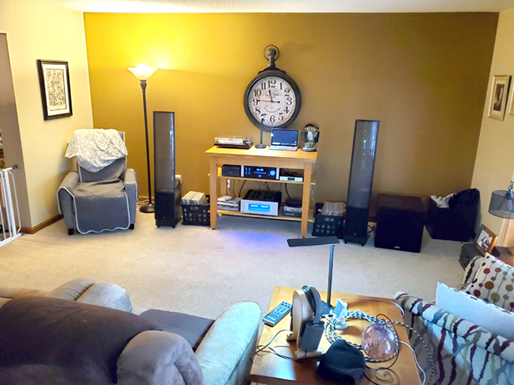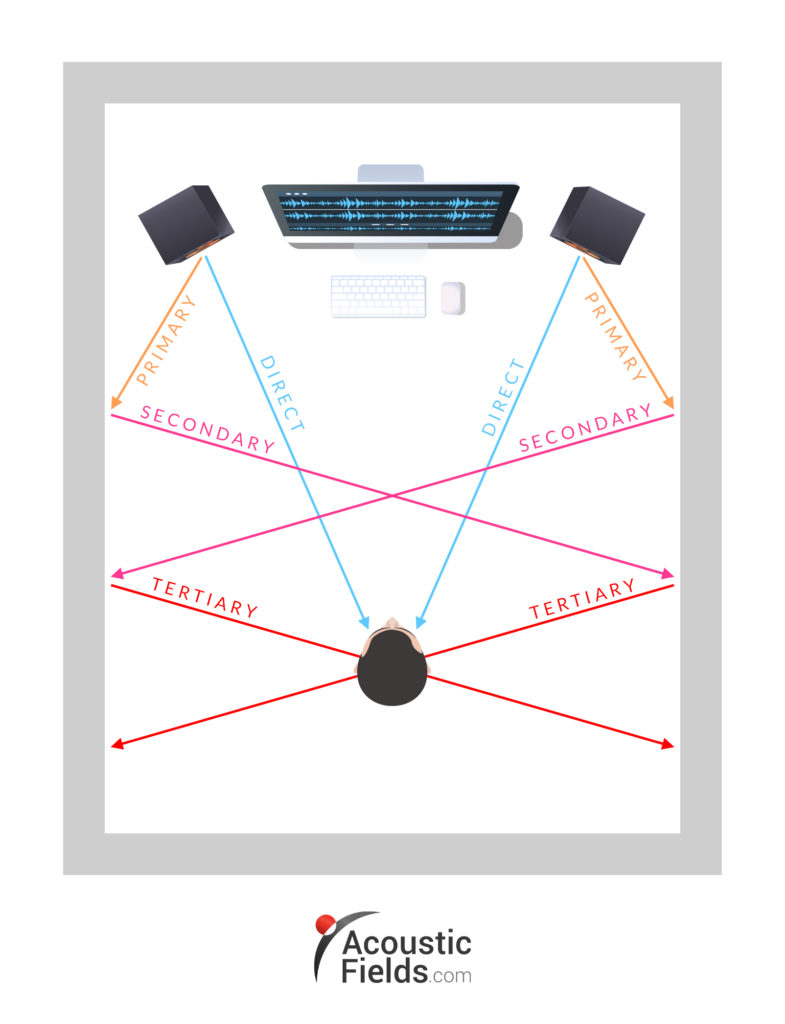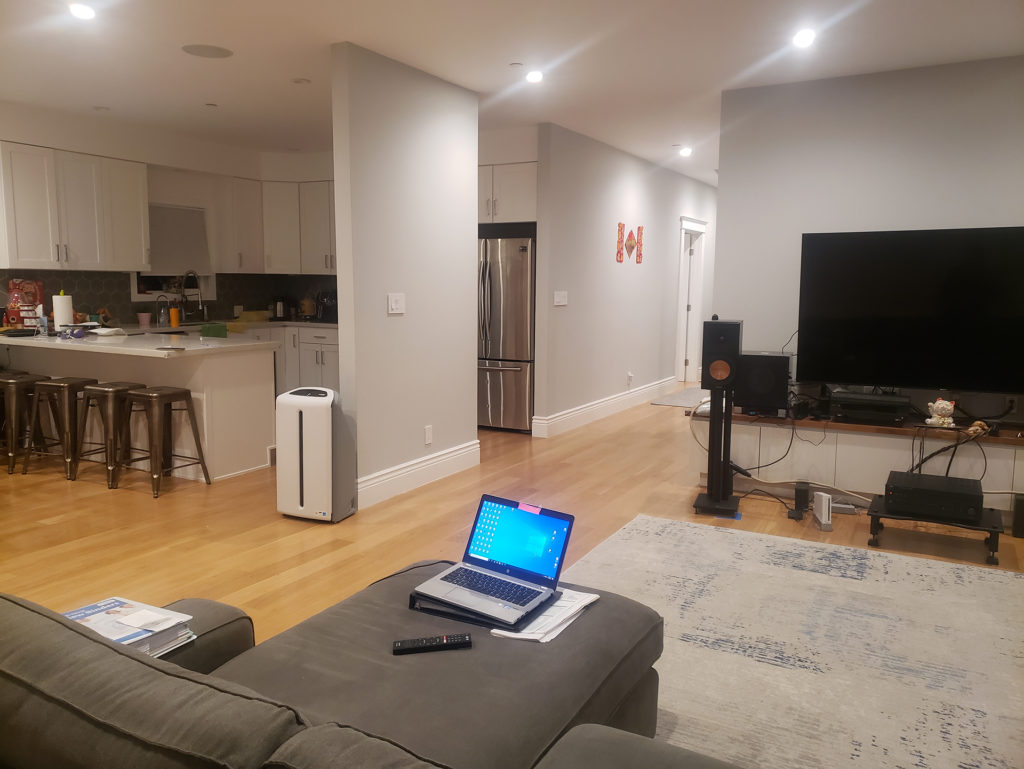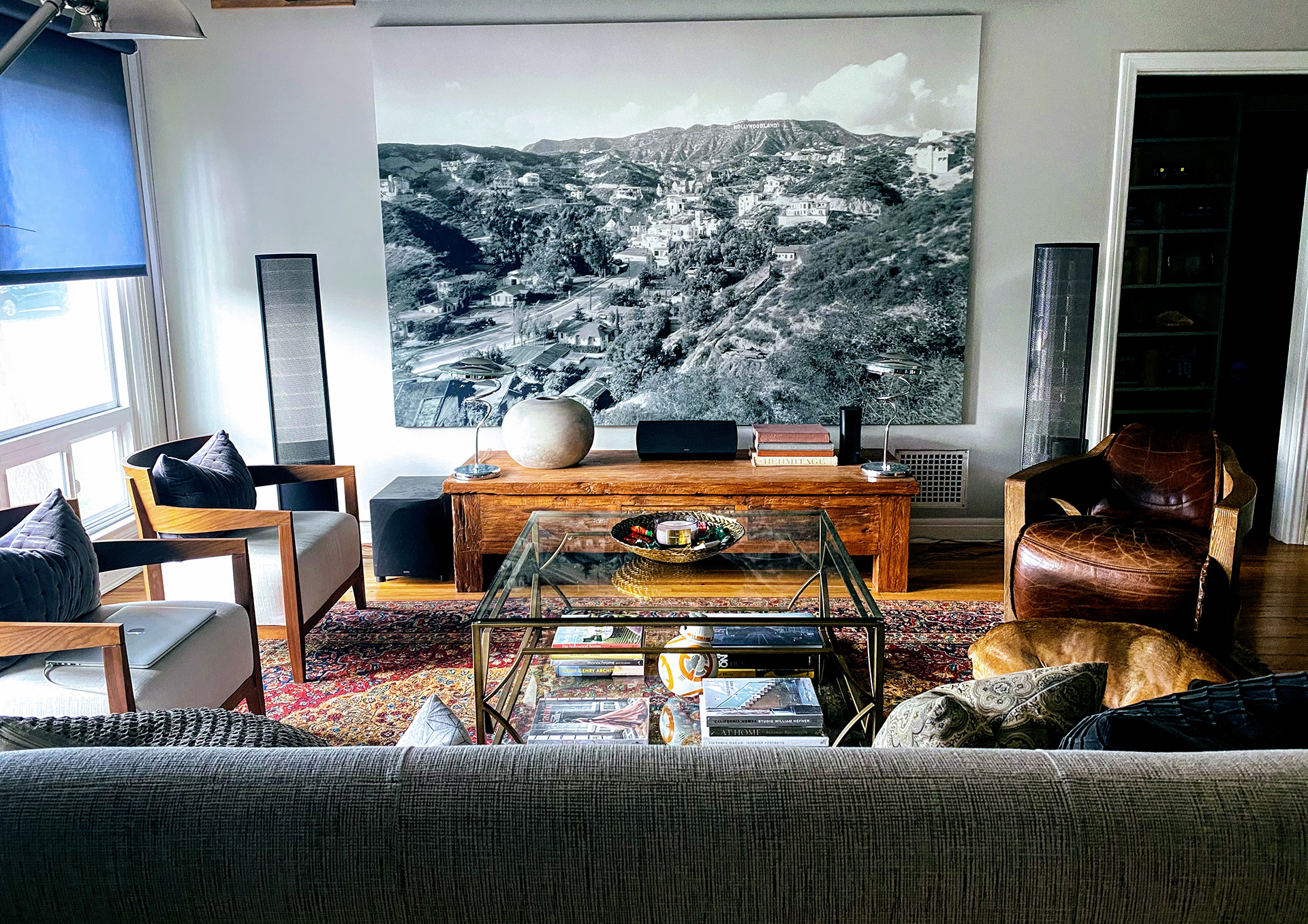Our room form process is a free service that is available at https://www.acousticfields.com/free-room-analysis/ . The room form will ask for your room dimensions along with other data. This information will then be sent to Acoustic Fields. The software will then prompt you to schedule a time slot to speak with Dennis regarding your room issues. We will tell you what frequency and amplitude issues you are having in your room, where they are located, and how large they are (amplitude). Make sure to upload up to 5 pictures of your room. Stand in the room center and take pictures of all four wall surfaces. Try and get some of the ceiling in the photos. These photos will tell us what the surface area of your room is made of along with the space availability for treatment. A picture is worth a thousand words especially when it comes to this application. Make sure you include photos. This is a free service that is in high demand. It is your responsibility to call Dennis at the scheduled time slot. If you miss your call time slot, we will send you an email to reschedule. If that appointment is missed your data will be removed from our system. See what we are about as a company: https://www.acousticfields.com/about/

In this photo, we have speakers set up in a small alcove within the room. It appears that the left channel has an opening along the left wall. The right wall has a window in it but does extend the full length of the room extending to past the listening position. We have a large table between the speakers and we also have a chair sitting next to the left channel speaker. The subwoofer is located next to the right channel speaker and there are also lots of objects placed next to and around the speakers. These are common set up mistakes and must be avoided at all costs. By placing objects around and in between the speakers you are creating objects for sound to bounce off of. This process is termed spurious reflections https://www.encyclo.co.uk/meaning-of-spurious_reflections. Our goal with any two channel system is to reduce reflections not create more of them. You never want to set speakers up in a room area that does not have equal sidewall distances and lengths to work with. We must be able to manage the time signatures of reflections from both sidewalls. If you have an open area on one sidewall and not the other, you are producing phase issues which are a form of room distortion.

In any two channel system, we have three sidewall reflections that must be managed correctly. Achieving a strong soundstage presentation requires that we balance the direct energy with the reflected energy. The time signature of the three reflections must be managed in a way that they do not interfere with the direct energy from the speakers. The direct or straight line energy is the energy that is the purest energy we can get from our loudspeakers. It is the straight line energy that travels from our speakers to our ears. It does not have reflections from the sidewalls in it. This is the reason mix engineers sit nearfield. They do this so they hear less room sound within their mixes. The primary, secondary, and tertiary reflections must have a time signature that is less than the direct energy from the speakers. When reflected energy arrives after the direct energy we get more pure sound than room sound. There must be a balance of direct and reflected energy with our two channel systems, so we must have sidewalls that are equal distance from our speakers. We can not have side walls that have openings for one channel and not the other.

In this picture we have another sidewall issue. In this photo the complete left channel sidewall is gone. This will produce a soundstage image that is not centered and will drift depending upon the source of music played. With two channel sound reproduction we must abide by set up rules. We must have a front wall and two sidewalls that are connected within our rooms. We need this predictability in set up so we can apply the specific rates and levels of absorption to treat those surface areas. Energy with our two channel systems depends on the front wall and both sidewalls working together. There must be predictability and consistency in the front and two sidewalls so we can do our set up away from those surface areas in a manner that minimizes room distortion. Secondly, since sound is distant dependent we need predictable and consistent distances to reach our goals with any two channel system. https://www.thefreedictionary.com/two-channel
How do we manage these sound issues within our rooms? First, we must divide the issues into two main categories. We have low frequency energy or “bass”. This is the energy that usually produces the most issues. It is the energy you hear when the garbage truck comes through the neighbourhood and sets off all the car alarms. It is that low-frequency pressure that can distort our music and our vocals. The correct way to manage this excess energy is to absorb it so that you reduce its strength or amplitude. Less pressure through absorption will produce for more definition and resolution in your music and voice. You must use diaphragmatic absorption since there is a lot of low-frequency to absorb. Diaphragmatic absorption is the most powerful of the three low-frequency absorption technologies. There are Helmholz Membrane and Diaphragmatic. technologies. https://www.acousticfields.com/product/carbon-panel/ To treat the middle and high frequency issues, we have two choices. We can use absorption or diffusion to treat middle and high frequencies within our rooms. Our Studio Pro Foam is designed specifically for music and voice. https://www.acousticfields.com/product/acoustic-foam/. Diffusion is another option to treat the middle and high frequency issues within our rooms. Diffusion is a technology to make a small room sound larger. https://www.acousticfields.com/product/sounddiffuser-acousticdiffuser-qd17/







